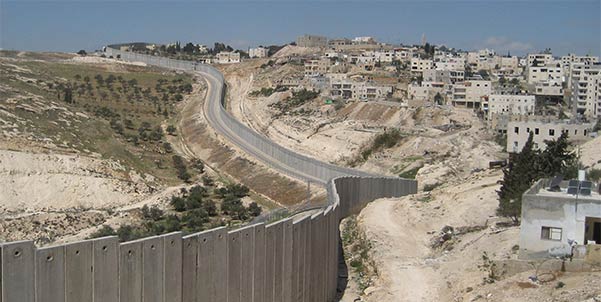In the last post we considered the division that existed between the Jewish people and the Gentiles, ie everyone else, in the time of Jesus. A ‘fence’ between them had been erected that protected the Jews from ethical decay, forbidding intermarriage, cultural appropriation or even eating with Gentiles. According to Williamson Jews saw Gentiles as ‘less than human’ and in response gentiles regarded Jews with suspicion. (1)
This division might not be considered important today. However, it is unquestionable that the recent political events have created significant divides between people in the UK. The reasons might be different, but the divides are just are real and painful as ever. (2)

In Ephesians 2:13-16 Paul addresses this issue of the division:
13But now in Christ Jesus you who once were far off have been brought near by the blood of Christ. 14For he himself is our peace, who has made us both one and has broken down in his flesh the dividing wall of hostility 15by abolishing the law of commandments expressed in ordinances, that he might create in himself one new man in place of the two, so making peace, 16and might reconcile us both to God in one body through the cross, thereby killing the hostility.
Now this is a passage about which a whole shelf of helpful and informative books have been written. Apparently, scholars agree that the divide in those days was either the law or the temple.(3) I wonder if all these agreeing scholars are protestant? I am not wanting to knock protestant scholars of course; they place a high value on the blood, the cross; and so they should. However, I still find myself asking ‘how did Jesus remove the division?’
The Last Adam
I am struck by the phrase ‘one new man‘. This resonates with Paul’s description of Jesus as the last Adam and second man. (1 Cor 15: 45-47) So it would seem that Paul in some way equates Adam and Jesus. The first man, Adam was created perfect, sinless, clothed in glory. The divine status of Adam was covered over, as a person who falls in a ditch is encased with mud or a the bright sheen of an iron bar is swathed by rust.[4] The glory and ‘shalom’ that God had prepared for Adam and Eve, was thus lost (or delayed) and thus we find ourselves riven with the decay of sin.

According to Paul, this Jesus, perfect in his humanity, was created as Adam was originally meant to be, and thus he is the second Adam. Though he went through much emotional suffering and enduring physical pain, Jesus never gave way to sin. Thus, while subjecting himself to live and move and have his being in the smog of earth’s atmosphere, permeated with sin, he was able to live the life that was intended for the first Adam. In his final act of obedience the full giving-soaked nature of the trinity was revealed in his act of total identification with the fallen race of the first Adam. Thus he is the last word in what it means to be a human.
Wrapping up the Last Adam
I am further struck that the ‘one new man’ descriptor of Christ is wrapped in two beautiful, mystical phrases ‘create in himself‘ writes Paul, ‘one new man in place of the two‘. Again a reference to the total identification of Jesus with his creation. This is a mystery, and as I always say, is not meant to be fully understood. But I dare to offer this pointer…
The Messiah subjected himself to live as we do, with the same final result. ‘He became sin’, writes Paul elsewhere. The Father’s write that ‘Jesus became human that we might become divine’. This is where our unity comes from, our joining with him, his infinity, his majesty, our differences that divide us are swallowed up into nothingness. Our differences that exalt him are glorified. Hence Paul could write that the two, the Jew and the Gentile, have become one. One new being, the Adamic blueprint finally given full expression.
Paul has lots to say about unity – it is a theme he returns to over and over urging the Christians to live out the unity they already have, since Christ has taken down the dividing wall. Given that in Philippians chapter 4, Paul specifically named Euodia and Syntyche, who were likely church leaders, entreating them to ‘be of one mind’ and put their differences behind them, it seems obvious that division is going to be always with us. [5]We didn’t really need Paul to tell us that did we?
Now that Brexit is done (well, you know what I mean), on one level it seems trite to say that this passage holds a key to unity ; but trite or not it does. From an eschatological perspective, these differences just wont matter anymore, because at the end of the age we will take up the full mantle of our Edenic glory. Just not yet – or at least not fully. That not fully – is important.
As ever, its the tension of living in the now and the not yet. Stepping back from division, considering our unity, helps to bring the walls down.
References etc
- Williamson, Peter S, Ephesians, (Baker Academic, Grand Rapids, 2009) 72.
- This post was started at around the time that The dis-United Kingdom left the EU.
- From notes I made for a bible study…
- This is a favourite analogy of early church writers such as Gregory of Nyssa
- Silva, Moises, Philippians, (Baker, 2005), p192 accessed here on 06/05/2020



